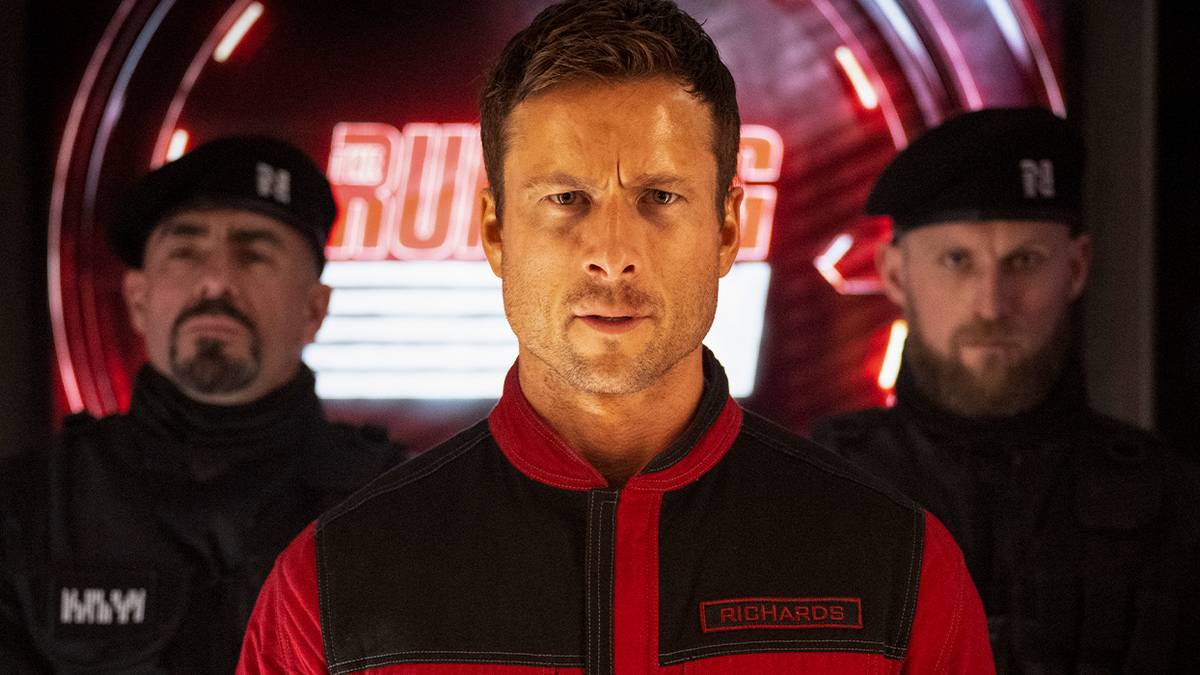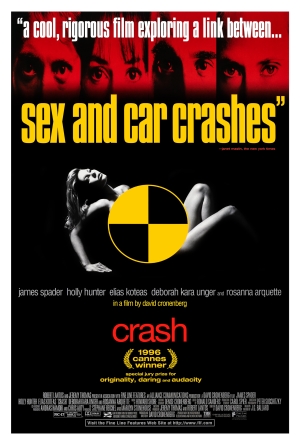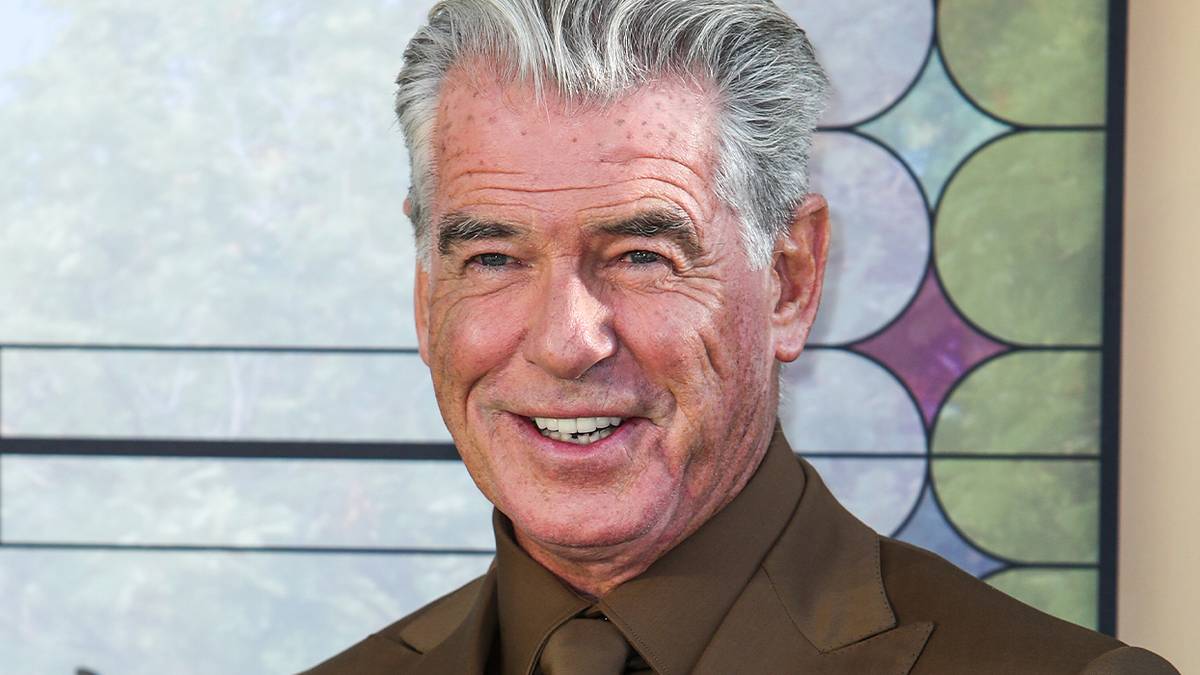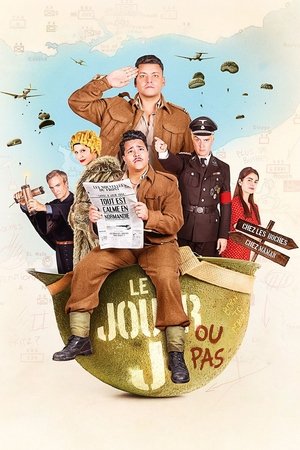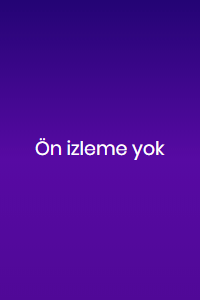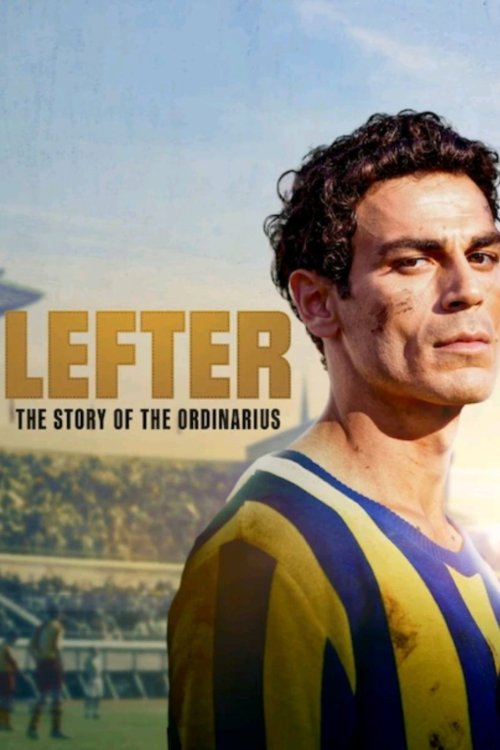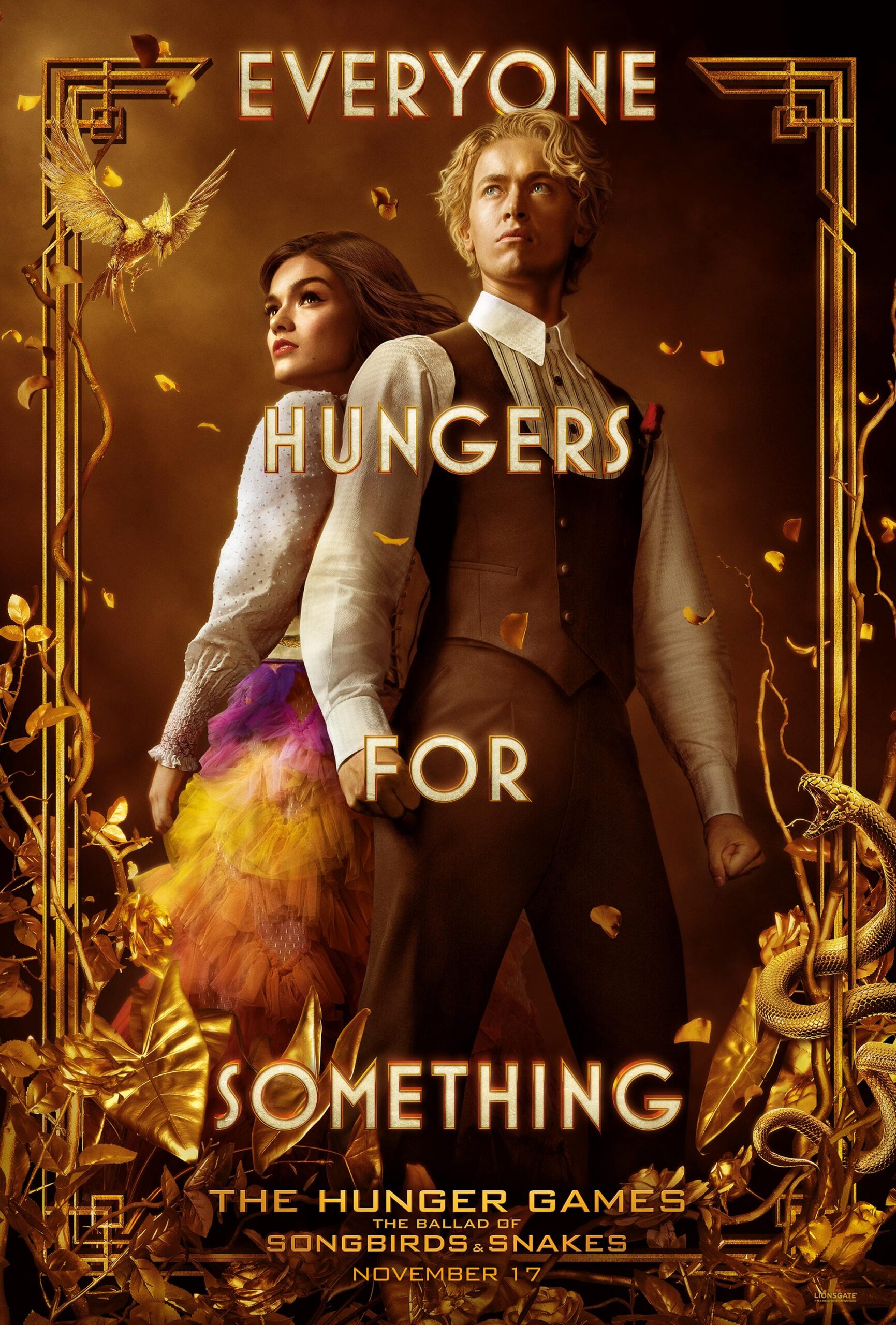Iconic Poet’s Final Year Captured on Film in “Joyus” Queer Documentary [Exclusive]
This week, Apple TV will debut one of the feel-good documentaries of the year in Ryan White‘s poignant, romantic, and witty Come See Me in the Good Light. The feature tells the story of Colorado poet laureate and activist Andrea Gibson and their loving partner, Megan Falley, a queer couple who face the tragic realities of an incurable diagnosis not with sorrow, but joy, laughter, and unbreakable partnership. Despite a clear end in sight for Gibson, they manage to live life with resilience and purpose, enjoying whatever opportunities they have left, from performing on stage to staying in bed together. As part of Collider’s Exclusive Preview series for upcoming winter television and film titles, we’re excited to share a new image that shows their ever-forward-facing mindset, as well as a conversation with the director about the process of capturing their surprisingly funny story.
Our image highlights the couple looking up and into the distance, as if looking off into the future. It’s an encapsulation of both their love and journey throughout Come See Me in the Good Light, which follows them through oncology visits, on-stage readings of their work, and everyday life as a couple. In 2021, Gibson was blindsided by an ovarian cancer diagnosis after what they first believed was a stomach bug began feeling more like “a stomach anaconda.” While undergoing treatment, things only grew worse as the cancer spread throughout their body and Gibson and Falley’s lives turned into a constant back and forth of good news and bad news. However, the dire scenario only serves to remind them of the preciousness of life and the fleeting moments we have with each other on Earth. They instead focus on creating laughter, giving their art to the world, and loving each other with the mindset that “to die is to be reincarnated in those we love while they are still alive.”
White is no stranger to feel-good stories. The documentarian released Good Night Oppy in 2022, a film tracking the journey of the Opportunity rover that far out-lived its life expectancy and explored Mars for over 15 years. It, too, is a story with an ever-looming end for its subject, yet it chooses to embrace the awe experienced by the little rover and the impact it had among the NASA researchers who saw its mission to the end. “That is a very interesting comparison because, on face value, they seem like totally different films,” White said when the Mars documentary was brought up. “But the narrative trajectory of both is very similar. They both are films that are going to end with the death of somebody.” In the case of Come See Me in the Good Light, the director says Gibson and Falley’s story, like Oppy’s, became one about living rather than dying, and, as such, surprised audiences with how joyful, hilarious, and life-affirming it was despite its grim backdrop.
“In the case of Andrea or whatever you call Opportunity, that you have hopefully fallen in love with through the course of the film, I think when I first took on Come See Me in the Good Light, I thought that it was going to be much more of an end-of-life film than it actually is in the end. What I discovered through making the film and spending so much time inside the love story of Andrea and Megan was how joyful and funny their day-to-day life was, even though it was their final year together, at least on this earth. And so, as we were shooting it, and especially as we were editing it, we started to kind of shift our thinking that this was less a film about death, and it was more a film about living. And that’s actually my greatest joy right now in releasing the film is audience members coming up afterward and being on almost this high, this like high of life and saying like, ‘I thought this film was going to be so sad and depressing, and I’ve never laughed so hard’ and ‘I’m going to call my wife or my husband or my child right now and say something to them that I’ve been waiting to say to them.’ And so I felt that while making this film, this extreme feeling of being alive and high on life. And so I’m hoping that audiences feel that too.“
‘Come See Me in the Good Light’ Director Found His Funniest Film in Darkness
At first glance, a film about a dying poet and their partner doesn’t sound like it would inspire much laughter. Yet, White credits producer Tig Notaro for selling him on Gibson as the perfect comedic subject. He said that, when he was looking for his next documentary, “I was looking for a comedy. And so it’s the ultimate irony that it ended up that my funniest film is a poetry cancer film.” White recalled Notaro saying that, “Andrea is one of the funniest people I’ve ever known in my life. I know that this doesn’t sound funny when I’m pitching you right now. But if you want to meet Andrea, I think you’ll see differently.” The deadpan comedian turned out to be absolutely correct from the moment the director met with his subject and began exploring their life.
“I would actually argue that Andrea is kind of the poet version of Tig,” he continued. “Like, they have a very similar sense of humor and a very similar storytelling style. And so once I got to know Andrea, I was constantly laughing.” However, Notaro never prepared White for just how much humor Falley would bring to the table. He recalled one moment in particular that showed how comfortable they were being themselves and cracking jokes together, despite having just met the documentary crew the same day.
“What I did not see coming was that Andrea would have a partner, Megan, who was equally hilarious. And so. As we were shooting the film, we were all just laughing from morning till night. And it was not difficult at all. Like it’s naturally who Megan and Andrea are. The best example of that is that there is a scene in our film. It’s probably our funniest scene of a dinner table conversation around fingering and thumbing, like the sexual act. And that scene was the first night that we met Andrea and Meg. Like, there was no typical warm-up period of many months to win trust. Like they were having those conversations in front of us and our camera from day one.”
A lot of the film’s comedy came naturally from the pair, but White admits it wasn’t all smooth sailing. Come See Me in the Good Light still faced the challenge of balancing their humor with the grim reality of cancer looming. There was always the possibility that a joyful moment in their lives or laughter among the crew would be cut short by more bad news about Gibson’s condition. The result was a film that the director said had audiences in tears and in fits of laughter simultaneously, something he never thought about before spending time with Gibson and Falley, but now understands quite well.
“There was, the tricky part, I think, was in the edit room, like finding that balance. What I’m noticing a lot of people saying, while they watch the film, or after they watch the film, ‘I’ve never laughed and cried so much at the same time.’ Which is never something I’ve thought about as a human emotion, where you’re doing both simultaneously. But I totally get it now that I’ve lived a year with Andrea and Megan, because that’s what we were all doing for that entire year. Like we were all laughing through the darkest and saddest of moments. You know, and vice versa, something might be so funny and light, and then suddenly Andrea would get a phone call that was basically, you know, a death sentence from their doctor. So something would turn from so light to so dark quickly and then back. And so that was sort of the fun of not only making this film, but especially editing it as well, was sort of striking that balance and hopefully surprising audiences with how funny and joyful a cancer film can be.”
Gibson and Falley Had Too Much Good Material for ‘Come See Me in the Good Light’
Having spent so much time up close and personal with Gibson and Falley also presented a challenge for White. When asked about any particular moments that encapsulated who the couple is and what he wanted the audience to take away from them, he said that every second is important. “There were never moments with Andrea where I was bored or where I thought, and by the way, this is totally typical in documentary filmmaking. Like, it’s actually a very important part of the process, I would argue, is that you film so many things that you know will never end up in the film,” he shared. “It’s just a part of our job. So you might shoot an entire day, and in the back of your head, you know from the very first minute of that day, like, ‘this is not going in a movie.'”
The issue, White said, is that his subjects simply gave him too much good material for Come See Me in the Good Light. That problem became apparent throughout the filming process, as he described spending entire days working and growing close with them. “But you still want to make your subject feel comfortable, and part of doing morning-to-night filming is winning that trust. So that’s a normal part of the process,” he continued. “But with Andrea, everything that I filmed with Andrea and Megan, I thought like, ‘This is going in the movie.'” Too much good footage is a good problem to have, ultimately, but it made the editing particularly brutal when everything felt so impactful. For as much as he captured, White said his best memories of the couple were when the cameras were off, and they’d close out days of filming, which often lasted until Gibson and Falley went to bed.
“It became a problem after filming for a year. And my editor was begging me, like, ‘Please stop going there so much and shooting because everything is too beautiful and brilliant to fit into a movie! And every time you come back, you say all of this needs to be in the movie.’ And so everything like that was with Andrea. But to me, the moments… every moment in the film is obviously treasured because it made it into the final cut somehow. So every one of those minutes was debated and survived many different cuts. But to me, the most treasured moments with Andrea are also so many moments that aren’t in the movie. When we would go there, we would arrive super early in the morning, and we would not leave until after they went to bed. Like Andrea and Megan would go to bed, and we would leave the house ourselves afterwards. So, so many of those moments off camera. Just spending time with them are the moments I’ll treasure the most.”
Ryan White Says Gibson and Falley’s Writing Elevated the Film to New Heights
A big part of capturing who Gibson and Falley are as people required digging into their writing. In addition to being named Colorado’s poet laureate by Governor Jared Polis, Gibson is a four-time Denver Grand Slam Champion with a massive catalog of spoken-word recordings and publications, including Bullets and Windchimes, Yellowbird, Hello Galaxy, Pole Dancing to Gospel Hymns, Take Me With You, You Better Be Lightning, and much more. Their writing even helped shape the film itself, as they co-wrote the song “Salt Then Sour Then Sweet” for the documentary with executive producers Sara Bareilles and Brandi Carlile. Falley also has multiple books to her name, including Drive Here and Devastate Me and How Poetry Can Change Your Heart, the latter of which she co-wrote with Gibson.
White knew that encompassing their writing careers in the limited runtime of a documentary was going to be a challenge going in. However, he found that pairing the footage with the poetry, when the right fit among their work was found, took Come See Me in the Good Light to a completely different level emotionally, which he can’t wait for more audiences to experience.
“I thought that that was gonna be the biggest challenge. I thought, ‘Oh shit, I’m making a film about a poet. Like, how are we going to weave in poetry in a compelling and cinematic way?’ And then I was like, ‘Oh shit, the poet is dating another poet. So we have two writers. How are we going to deal with that?’ And in the end, I think the biggest challenge in the edit was limiting the amount of poetry that we did weave in. Because what we started finding was some of these scenes that we shot with Andrea and Megan, these beautiful, hilarious, painful moments in their lives. Once we paired it with an Andrea poem, it just took the scenes to a completely different level emotionally. And so it was a lot of experimentation. Like, let’s try this verite scene paired with this poem. So it was like countless amounts of permutations we could go, because Andrea has written thousands of poems, and we had thousands of scenes. And so deciding those pairings in the end, and especially cutting some of them, ended up being the biggest challenge. So I’m thrilled.”
More than anything, though, the director hopes his latest documentary can introduce more audiences to Gibson and Falley’s work. He hopes Come See Me in the Good Light can be the perfect introduction to these witty and wonderful people for viewers who otherwise may never have heard their names, read their words, or listened to their poetry before.
“I wasn’t an Andrea fan before I made this film. I had never heard of Andrea’s poetry, and I had never heard of Megan Falley as a writer either. I am thrilled for people like me that might come to the documentary, never having read or heard or seen their performances, being introduced to them. Cause to me, both of them are like luminaries of our time. Andrea, especially as a spoken-word artist. I’ve never seen anything like it. And then Megan, as a writer who’s finishing her memoir, which is a part of our documentary, she’s writing the memoir during the documentary, I think, is going to be a masterpiece. So I’m thrilled that people might discover both of their art forms in this documentary. And my hope is that Andrea’s written and spoken-word legacy will live on for a very long time, especially for people discovering the documentary.“
Produced by Notaro, White, Jessica Hargrave, and Stef Willen, Come See Me in the Good Light premieres on Apple TV on November 14. Check out our exclusive image above and stay tuned here at Collider for more from our winter preview event throughout the week.

- Release Date
-
November 14, 2025
- Runtime
-
109 minutes
- Director
-
Ryan White
- Producers
-
Tig Notaro, Jessica Hargrave, Ryan White, Stef Willen
![Iconic Poet’s Final Year Captured on Film in “Joyus” Queer Documentary [Exclusive]](https://canlidizi15.com/wp-content/uploads/2025/11/come-see-me-in-the-good-light-feature.jpg)








